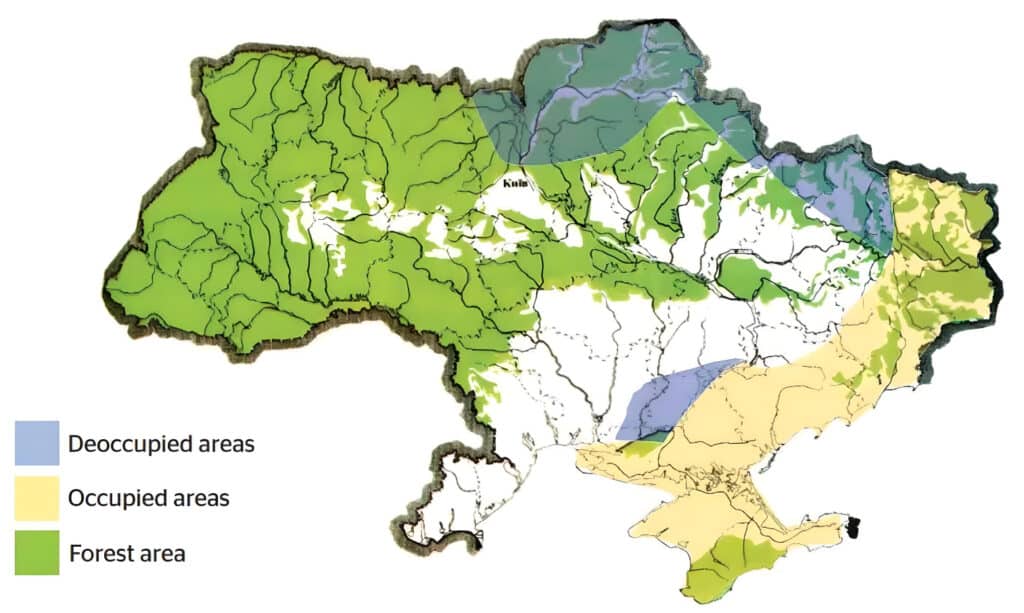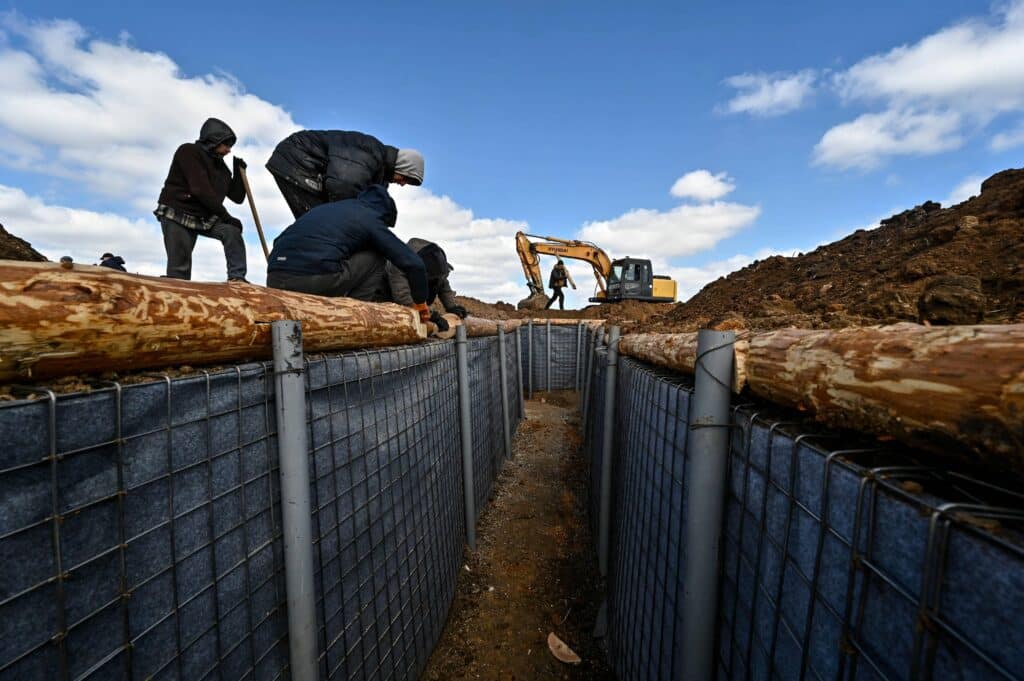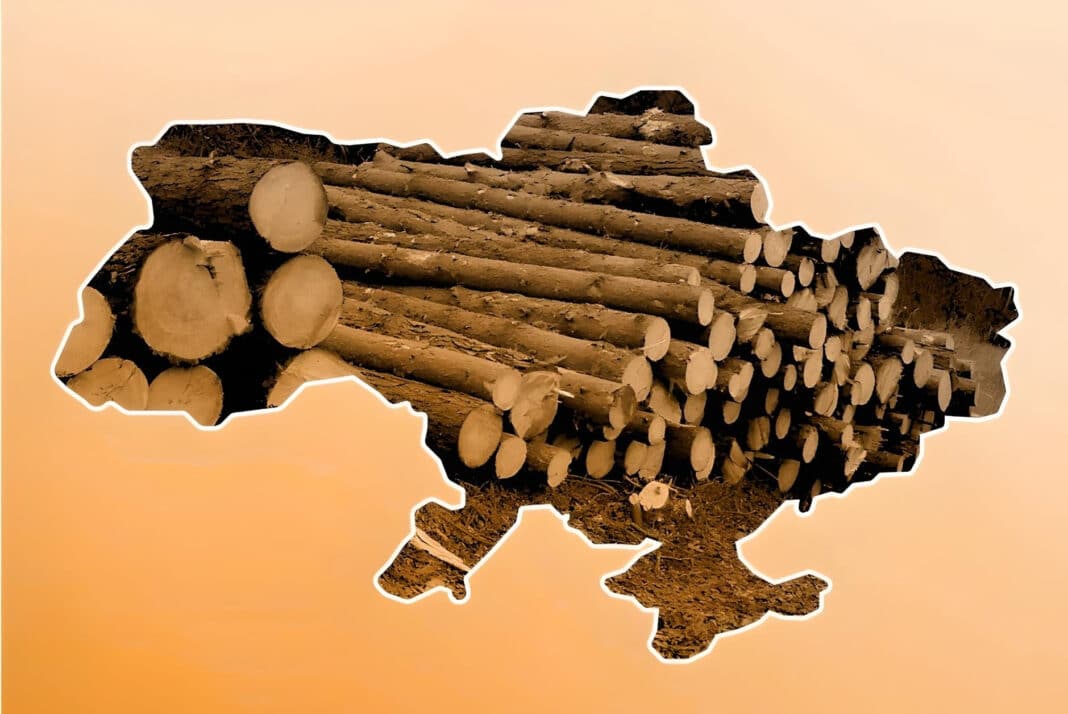More than 62,000 cubic metres of Ukrainian forests were illegally cut down last year, with the Zelenskyy country prioritising escalating timber revenues over old-growth forests. As a result, Ukraine now risks becoming a “high-risk” country, as defined by the EUDR, which could threaten its economic integration with the EU.
That is according to the WWF, which sounded the alarm on Resolution No. 454, a new timber regulation approved by the Ukrainian Government earlier this year. And whilst the new regulation will beef up protections in the Carpathian mountain forests (from 2027), it could also increase logging of natural old-growth forests “as loggers will be able to log anywhere, even in protected areas.”
According to Svitlana Kuts, the WWF-Ukraine Director, “there is a risk that the new regulation will unjustifiably increase felling and corruption in the industry.” Before adding, “The new version contradicts Ukraine’s European integration obligations and exacerbates the likelihood of further international scandals in the case of timber harvesting in ancient natural forests and other valuable forest ecosystems.”

Since Russia’s full-scale invasion of Ukraine, the conflict has drastically increased the relative value of the previously under-utilised role that forests play in the national economy. “This is because Ukraine’s main industrial areas were located in occupied and fought-over territories…with forests, thankfully, largely located in the “safe” areas of Ukraine and thus remain a largely intact resource,” according to a report provided by the Basel Institute of Governance, published last year.
Part of the Environmental Corruption Deep Dive Series, How Corruption Threatens the Forests of Ukraine: Typology and Case Studies on Corruption and Illegal Logging, tackles the challenges faced by an industry that has ballooned in scale and importance and is now struggling to develop regulations to keep pace with demand.
“Continued attacks on civilian infrastructure are creating a high demand for forest products to generate heat and be used in reconstruction efforts,” the report said, adding that “the Ukrainian Government has recognised the sector’s increased importance by creating a new state-owned enterprise, Forests of Ukraine – now the country’s largest entity.”

For Yuliya Ovchynnikova, a Ukraine member of the Alliance for Liberals and Democrats for Europe and opposition to the Zelenskyy government, the new resolution poses a significant risk to Ukraine’s trade with the European block – Ukraine’s largest trading partner for forest products.
“The new EU regulation on deforestation – EUDR – will enter into force next year, with timber harvested in an illegal and unsustainable way will not be allowed on EU markets,” with “the more problem logging, the worse the country’s status from the point of view of the EU.”
“If Ukraine falls into a high-risk zone, it will be a problem for woodworkers.” “They will be forced to conduct lengthy and costly additional inspections by independent experts.”
What happened to Ukraine timber when Russia’s invasion started?
In the year leading up to the war, Ukraine’s forestry sector, including furniture and wood processing, only accounted for 1.1-1.2% of the country’s GDP. However, in some areas, including the Carpathians and Policountry, Ukraine’s forest industry is the main source of income for many local communities.

But that all changed when the invasion started, “with the Ukrainian Government declaring its intention to increase the amount of logging in controlled territory,” according to Yehor Hrynyk, Andrii Biletskyi, Amanda Cabrejo le Roux, the authors of the Basel Institute of Governance report.
“This also responds to the increase in demand for firewood following the destruction of energy infrastructure and the need for additional revenues due to the difficult economic situation,” they said, adding that Ukraine exporters increasingly rely on the EU to sell forest products.
“And considering that the EU is tightening its transparency and sustainability requirements for forestry products (as a result of the EUDR) and that the EU makes up most of Ukraine’s wood products exports, reforms are increasingly urgent to ensure this vital market remains accessible.”
- To learn more about Resolution 454, click here.






